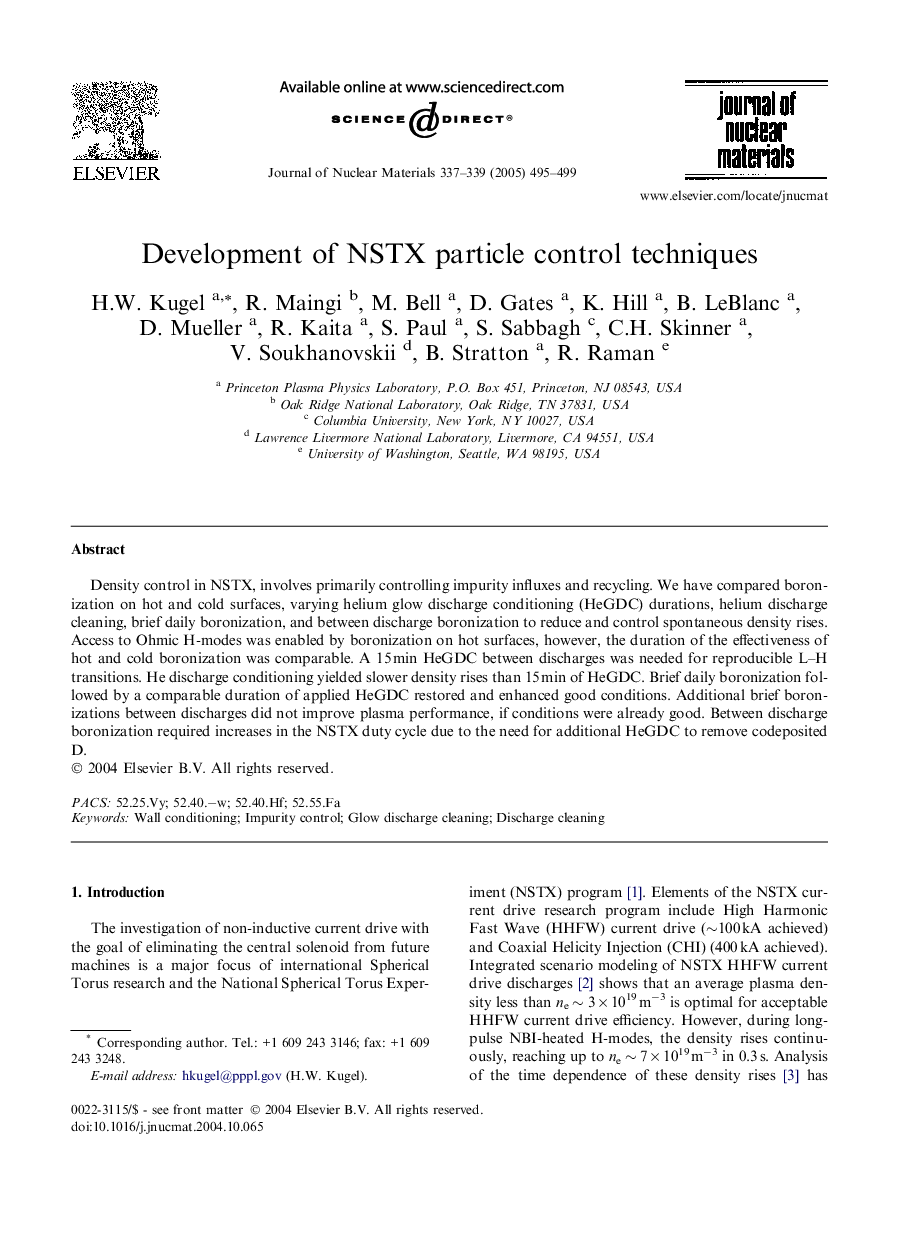| Article ID | Journal | Published Year | Pages | File Type |
|---|---|---|---|---|
| 9793901 | Journal of Nuclear Materials | 2005 | 5 Pages |
Abstract
Density control in NSTX, involves primarily controlling impurity influxes and recycling. We have compared boronization on hot and cold surfaces, varying helium glow discharge conditioning (HeGDC) durations, helium discharge cleaning, brief daily boronization, and between discharge boronization to reduce and control spontaneous density rises. Access to Ohmic H-modes was enabled by boronization on hot surfaces, however, the duration of the effectiveness of hot and cold boronization was comparable. A 15Â min HeGDC between discharges was needed for reproducible L-H transitions. He discharge conditioning yielded slower density rises than 15Â min of HeGDC. Brief daily boronization followed by a comparable duration of applied HeGDC restored and enhanced good conditions. Additional brief boronizations between discharges did not improve plasma performance, if conditions were already good. Between discharge boronization required increases in the NSTX duty cycle due to the need for additional HeGDC to remove codeposited D.
Keywords
Related Topics
Physical Sciences and Engineering
Energy
Nuclear Energy and Engineering
Authors
H.W. Kugel, R. Maingi, M. Bell, D. Gates, K. Hill, B. LeBlanc, D. Mueller, R. Kaita, S. Paul, S. Sabbagh, C.H. Skinner, V. Soukhanovskii, B. Stratton, R. Raman,
